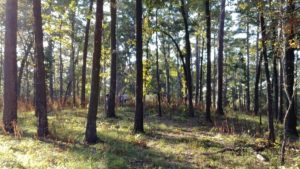NEWS
Louisiana Tech biological sciences assistant professors Dr. Natalie Clay, Dr. Julia Earl, and Dr. Terri Maness, along with UTeachTech Master Teacher Chris Campbell, have put together a workshop for environmental educators in Louisiana.
 The Louisiana Environmental Education Commission (LEEC) Short Course is titled “Using Mobile Devices to Track Biodiversity in the School Yard and Habitat Restoration Areas,” and will be presented from 9 a.m. to 4:30 p.m. Saturday, Feb. 16, on Tech’s campus at Carson Taylor Hall, 1 Adams Blvd, Ruston.
The Louisiana Environmental Education Commission (LEEC) Short Course is titled “Using Mobile Devices to Track Biodiversity in the School Yard and Habitat Restoration Areas,” and will be presented from 9 a.m. to 4:30 p.m. Saturday, Feb. 16, on Tech’s campus at Carson Taylor Hall, 1 Adams Blvd, Ruston.
Grade Levels will be divided into 5-8, 9-12, and college.
Registration deadline is Friday, Feb. 8.
The LEEC’s purpose in these “Short Courses” is to bring environmental education professional development to communities all around the state.
Here is background on the Mobile Devices Short Course that will be shared at Tech:
“Ecological Restoration is a key tool conservation biologists and natural resource managers use to create new habitat for plants and animals and to restore ecosystem services to people. To understand the impact of restoration and the success of those efforts, the changes in ecological communities need to be monitored over time. These changes can be assessed by monitoring changes in the number and type of species of plants and animals found in the restoration area over time.
“Our workshop and tour will involve a discussion of restoration, particularly of the Shortleaf Pine ecosystem, which is endangered in Louisiana. We will tour Wafer Creek Ranch, which is one of the only Shortleaf Pine restoration projects in the state. Teachers will acquire skills and knowledge about restoration and wildlife through learning about multiple restoration practices and active engagement in techniques used to monitor wildlife with an emphasis on how these can be employed in classroom activities.
“In particular, this workshop will emphasize biodiversity monitoring through iNaturalist, a free citizen science app and web-based platform compatible with smart phones, tablets, and computers. Through iNaturalist, users can take pictures of organisms and upload them to an online database to document plant and animal locations. Organism identification occurs with the help of other iNaturalist users, and scientists worldwide can use the data collected. The techniques learned could be easily implemented to examine school-yard plants and animals. Teachers will also leave the workshop with the tools and practice to incorporate an anchoring phenomena routine in line with science practices and the new Louisiana environmental and earth science standards.”